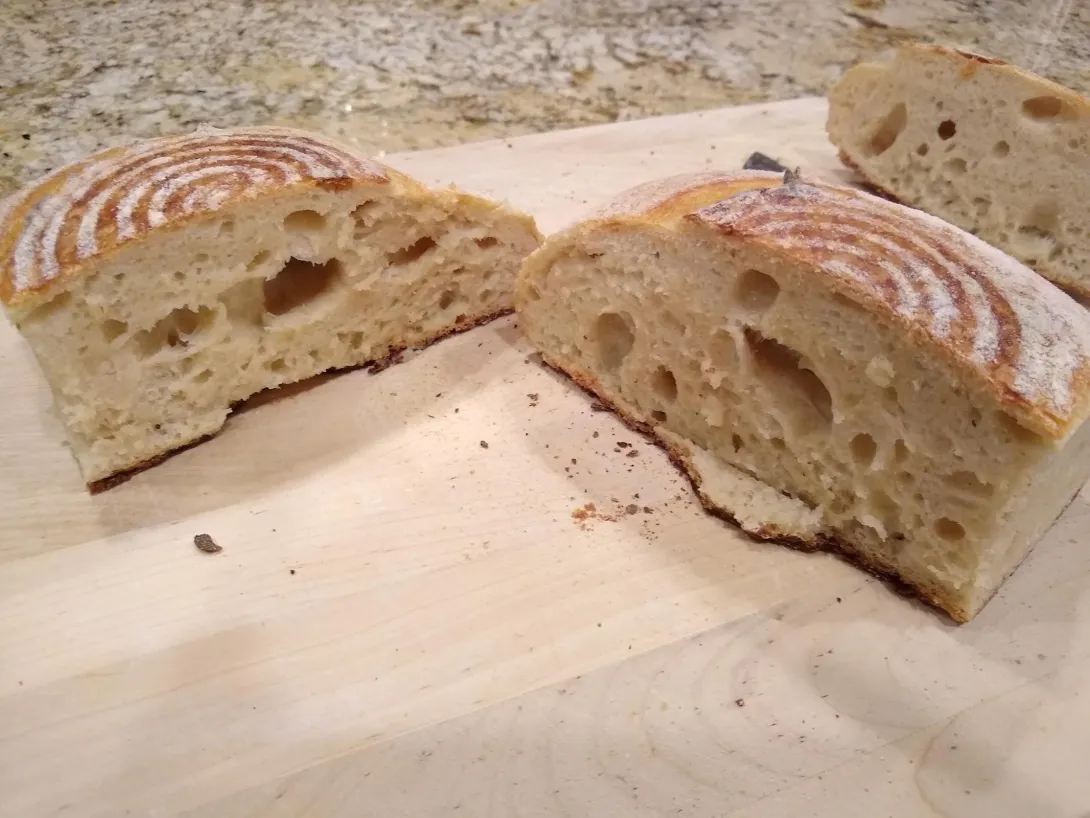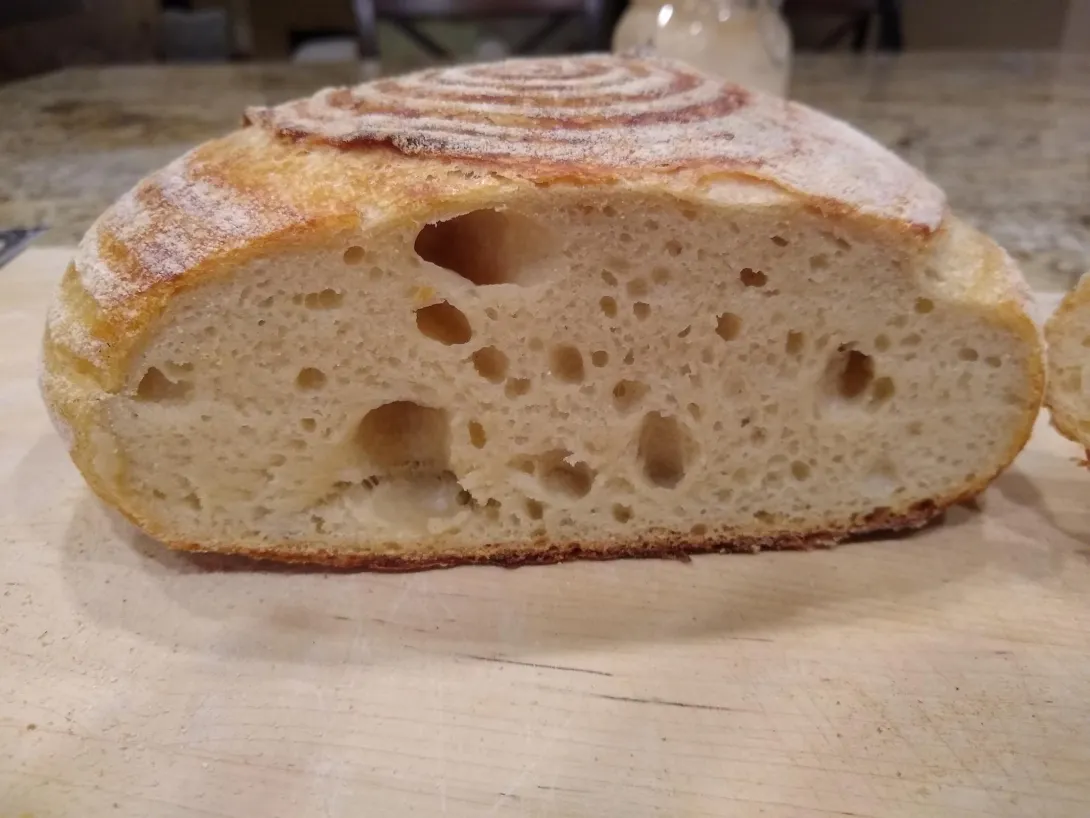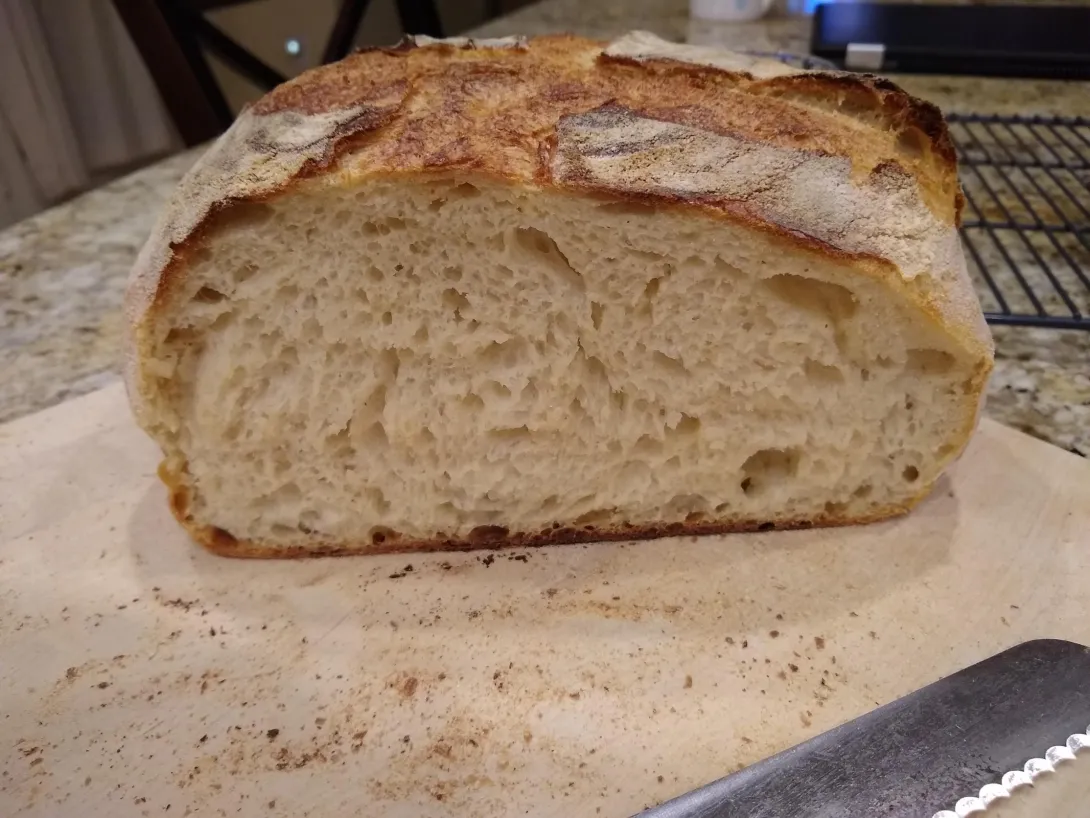

I have been using the Tartine Country Loaf recipe from NYT for a couple years and have had pretty decent loaves with this method. However, the past couple times it's been an utter failure and I'm not sure why.
I usually store it in the oven with the oven light on in between turns and during the bulk ferment stage, but this time I chose to keep it outside (maybe around 68 F?) to see what would happen. I'm also worried that I may be degassing it too much during the shaping process. My first question is - is this overproofed or underproofed? I let it sit for almost four hours during the bulk ferment outside, but the poke test, when poked in the middle, showed that it was only a little better than underproofed. Any other ideas on what to try?
It looks underproofed, if it was overproofed it would've look like it collapsed. I have a mildy strong starter so I keep my sourdough out at room temperature (just under 70 degrees Fahrenheit) for around 6-8 hours, so 4 hours might be too short. If you're asking about ways to tell when your bread is fully proofed then I haven't had much luck with the poke test either, so I think it would be easiest just learn how large you want the bread to proof. For example, I know my bread is ready when it is risen just above the top of my banneton. I hope this makes sense and good luck with your baking!
I agree with banana. "almost" 4 hours at 68 F leads to a grossly under fermented loaf. You should be closer to 6, but remember to be one with dough, not the clock.
Thank you both! I will have to use my thermometer from next time on and rely more on how the bread looks, I guess. I'd read on another post that overproofed bread looked pale and flat, hence I didn't know whether mine was over or under, so thank you for your help :)
Also, be sure you are not over mixing. Tartine asks for four stretch and folds, I think. Don't do more.
Each stretch and fold creates a matrix of gluten. Like a window screen. The gas bubbles get caught in the pockets of the screen.
If you do too many stretch and folds, you've added screen upon screen upon screen. That's bad for the universe. And for your now too-dense bread with large blown-out gas pockets.
Murph
In the recipe I use, NYT suggested 5-7 stretch and folds! I typically use 6 and it's worked out alright, but I think this time I may have been too rough with the dough during folding and shaping perhaps.
Under vs overproofed, you need to examine the crumb away from the large holes. If the crumb is very very dense and gummy it is underproofed. If the crumb apart from the large holes is actually quite good then overproofed is a possibility. In this case from the photos it appears underproofed. It will take quite a long time to complete adequate bulk fermentation at 68ºF four hours wouldn’t be long enough for the Tartine recipe at 68ºF.
It's extremely dense and gummy, which confirms everyone's thoughts. I'll have to go back to proving it in the oven from now on.
I've had success maintaining a higher temp in my microwave with a bowl or saucepan of hot water. Good luck!
like there s too much heat under the loaf. Could that be?
So this time, I preheated my dutch oven at 500F for 1 hour prior to baking, which I'd never done before. I did this because in previous loaves, the bottom is always a little denser and I thought it might be due to the cast iron not being hot enough. What would recommend?
I'd call that too hot, especially metal. Try 450°F
I also cast my vote for underfermented. Crumb looks like a "freeze framed" end of the bulk rise. So the time frame it took to get to baking (all things being the same) use that time for the bulk, then shape and go for a final rise. That would be my suggestion.
Thank you! I'll try 450 next time. The recipe I was using said to preheat at 500 and then turn it down to 450, but I'll preheat and keep it at 450 and see how that goes.
I'm trying another time today, and am fermenting/proofing it in the oven with the light on - when measured with a thermometer it's around 79 F. Hopefully this works out better with all your advice :)
Another vote for underproofed. Or maybe even more specifically, it looks even under-fermented in bulk perhaps. Are you sure your starter is strong?
I have had to feed my starter twice a day (it triples in size within 5-6 hours of feeding and falls after another 6-8), so I thought it was active. I know the float test isn't perfect, but it floated pretty nicely and smelled fruity and tangy. Do you think it might not be sufficiently active?
Also, how do you tell whether it's under-fermented versus underproofed?
Oh your starter sounds active to me. I bet it was the low temperature (68ºF) that did you in. The dough just never fermented enough
Tried again today, and it's not perfect but it's certainly better than the last time! It rose so much during the steaming part of the bake that it hit the top of the Dutch oven and couldn't rise further. Thank you for all of your help!!
Image

So much better, the crumb looks well fermented this time, excellent congrats.
:). How's the bottom coming along?